

The Dhammic Life Which Is Still a Secret
“What is the difference between dhātu and dhammas, if any?”

Heart-Felt Wish to All People in All Countries of the World
The more closely we contemplate our bodies and minds and the world we live in, the more profoundly we become aware of fragility and instability. When a crisis like this pandemic lays bare the unreliable and uncertain nature of the world, we are unsurprised. We know that what is happening right now is not a deviation from the norm.

The Zen Ox Herding Pictures #5
The young man has won the fight with the ox, which represents his triumph in life’s struggles. The ox has become submissive and obediently follows the man’s lead.

Q3. What Is the Most Concise Message of Buddhism?
That nothing should be grasped at or clung to is a handy maxim from the mouth of the Buddha himself. We don’t need to waste time in searching through the Tipiṭaka (the recorded Teaching), because this one short statement puts it all quite clearly.
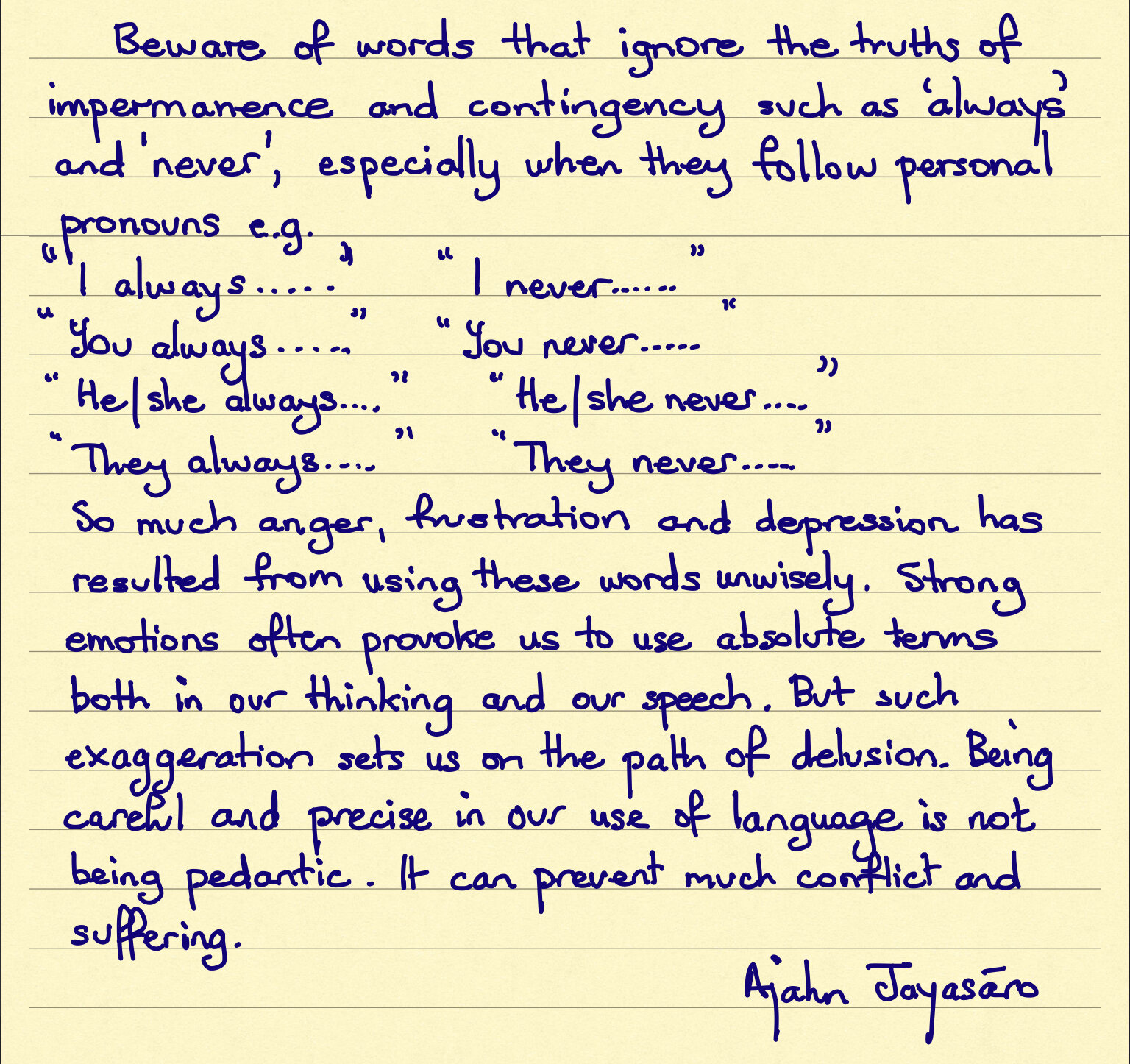
Being Careful and Precise in Our Use of Language
Beware of words that ignore the truths of impermanence and contingency such as ‘always’ and ‘never’, especially when they follow personal pronouns e.g.

The Zen Ox Herding Pictures #4
Here the man is catching the ox and wrestling with it. The expression on his face suggests that it is difficult and exhausting. This picture illustrates that one is bound to encounter difficulties, dangers, and fatigue when building and shaping one’s life.

Q2. What Did the Buddha Teach in Particular?
By contrast, the middle way consists of, on one hand, not creating hardships for ourselves and, on the other hand, not indulging in sensual pleasures to our heart’s content. Walking the middle way brings about conditions that are in every way conducive to study and practice, and to success in putting an end to dukkha (suffering).

An Innocent Abroad: A Memory of Meeting Ajahn Buddhadasa
“I didn’t know that he was well known for his teachings on reincarnation and that they were quite different than most other Thai masters. He proceeded to give me a long talk about his reincarnation teachings.”
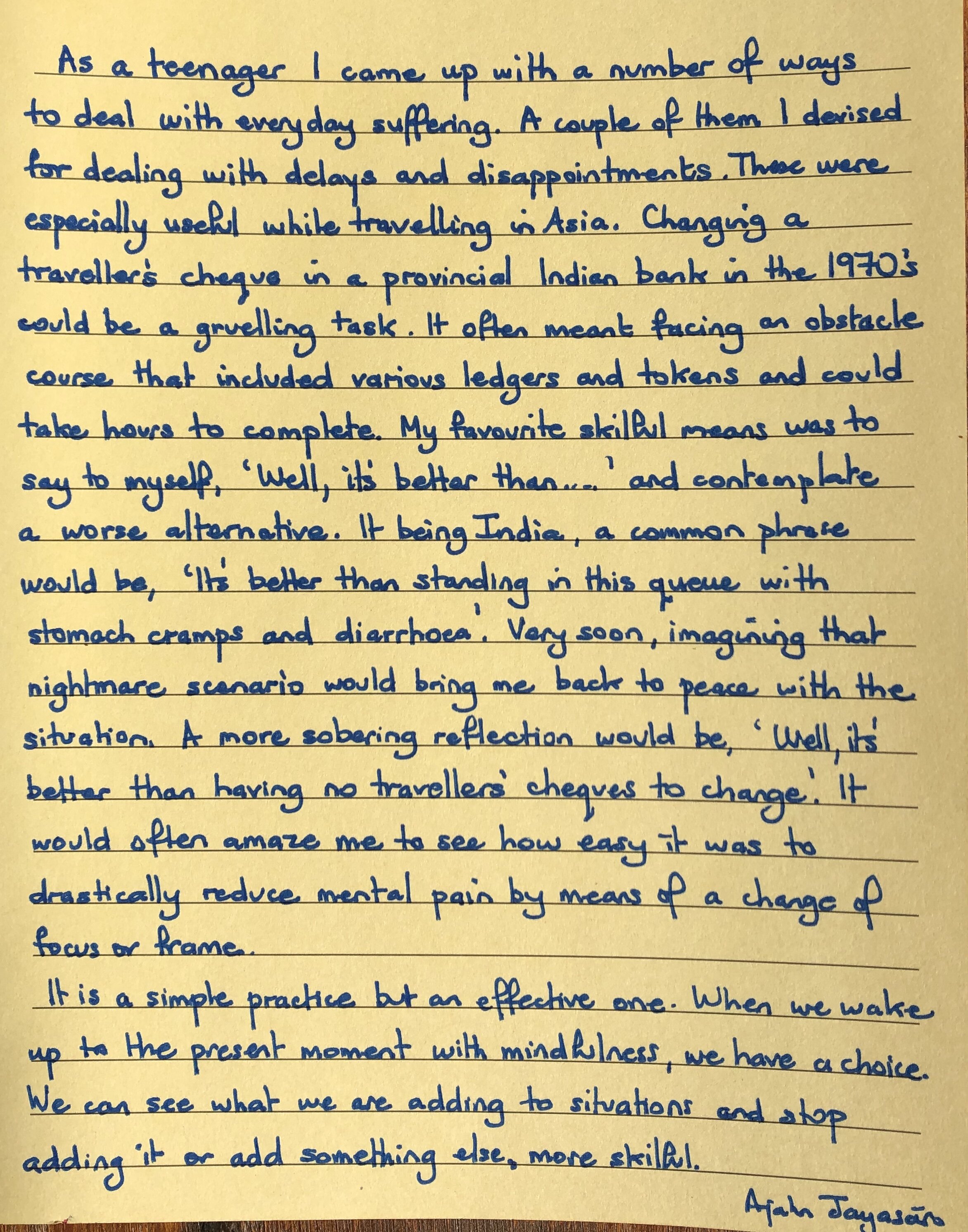
Dealing with Everyday Suffering
As a teenager I came up with a number of ways to deal with everyday suffering. A couple of them I devised for dealing with delays and disappointments. These were especially useful while travelling in Asia. Changing a traveller’s cheque in a provincial Indian bank in the 1970’s could be a gruelling task.

The Zen Ox Herding Pictures #3
The man has followed the tracks on the ground and has caught sight of an ox. Although he sees only its rear, he is determined to catch the ox for his own use. The rear of the ox symbolizes a wholesome beginning of one’s worldly life, which is the right starting point leading to the path where one can reap the great benefits of being born as a human being.

Q1. What Did the Buddha Teach?
The best way of answering is to quote the Buddha himself, ‘Monks, now, as in the past, I teach only dukkha (suffering, distress) and the quenching of dukkha.’

Stopping the Flow of Dependent Origination
“My first exposure to Buddhism was through Tibetan Buddhism. Could you please comment on what you think are the essential differences between Tibetan and Thai, or Suan Mokkh, Buddhism? Would reading books on Tibetan Buddhism only confuse what we have learned here?”
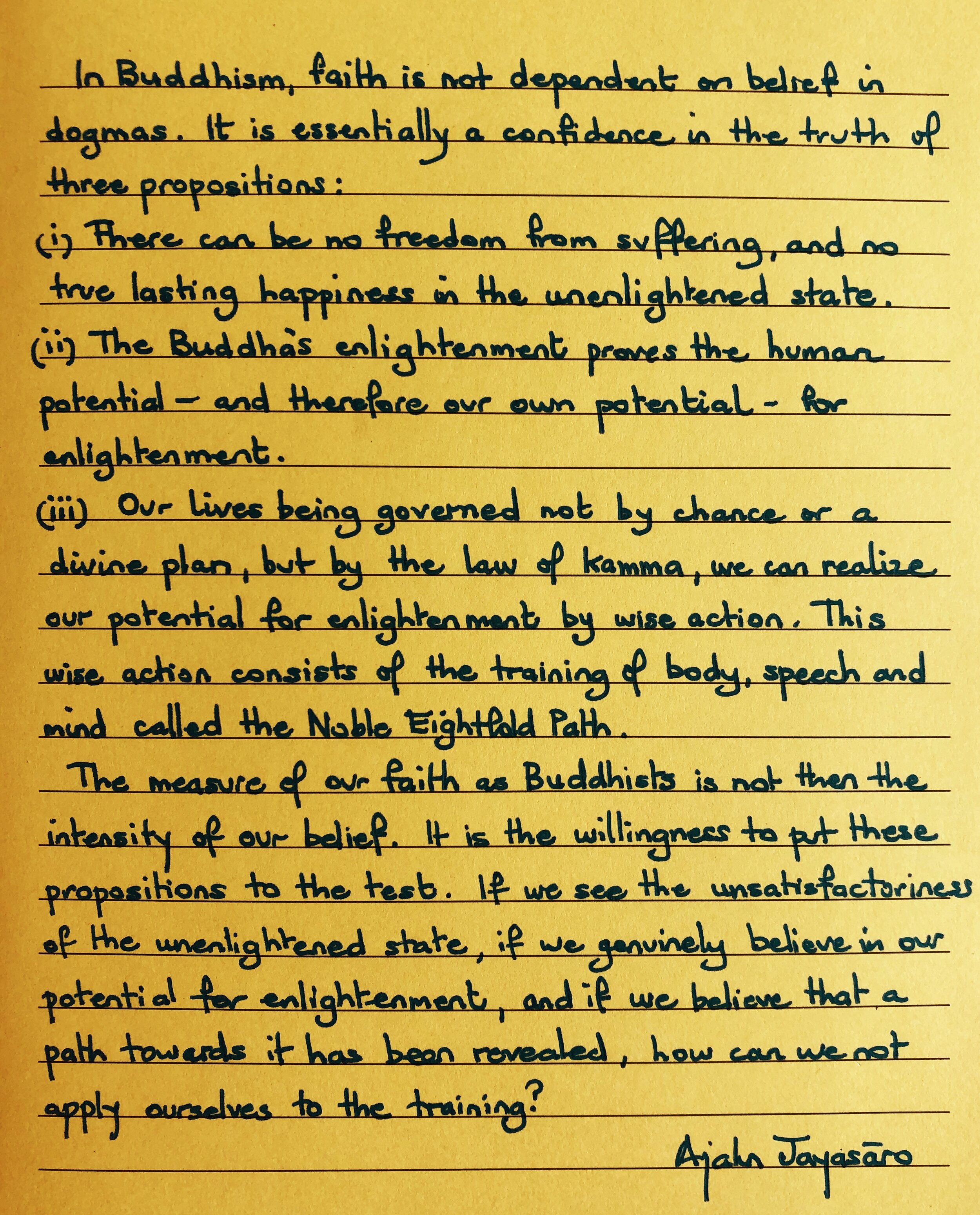
Buddhists’ Faith
In Buddhism, faith is not dependent on belief in dogmas. It is essentially a confidence in the truth of three propositions:
(i) There can be no freedom from suffering, and no true lasting happiness in the unenlightened state.

The Zen Ox Herding Pictures #2
The man has found some tracks on the ground. They are especially significant to the meaning of this picture. Although he is not certain what kind of tracks they are, he finds them interesting. He then decides to follow the tracks until he catches up with the animal that made them.

Stopping the Flow of Dependent Origination
“My problem is that over the last few years I’ve spent much of my free time alone. Nothing wrong with that. And even though I have tried to capture the positive points of myself during this time, there is this strong feeling lurking in the background that I am not whole, or that I am less complete due to not having a meaningful loving relationship in my life; family excluded. If it matters I am not promiscuous. Any suggestions or methods to alleviate this feeling? Or gain a stronger sense of self?”
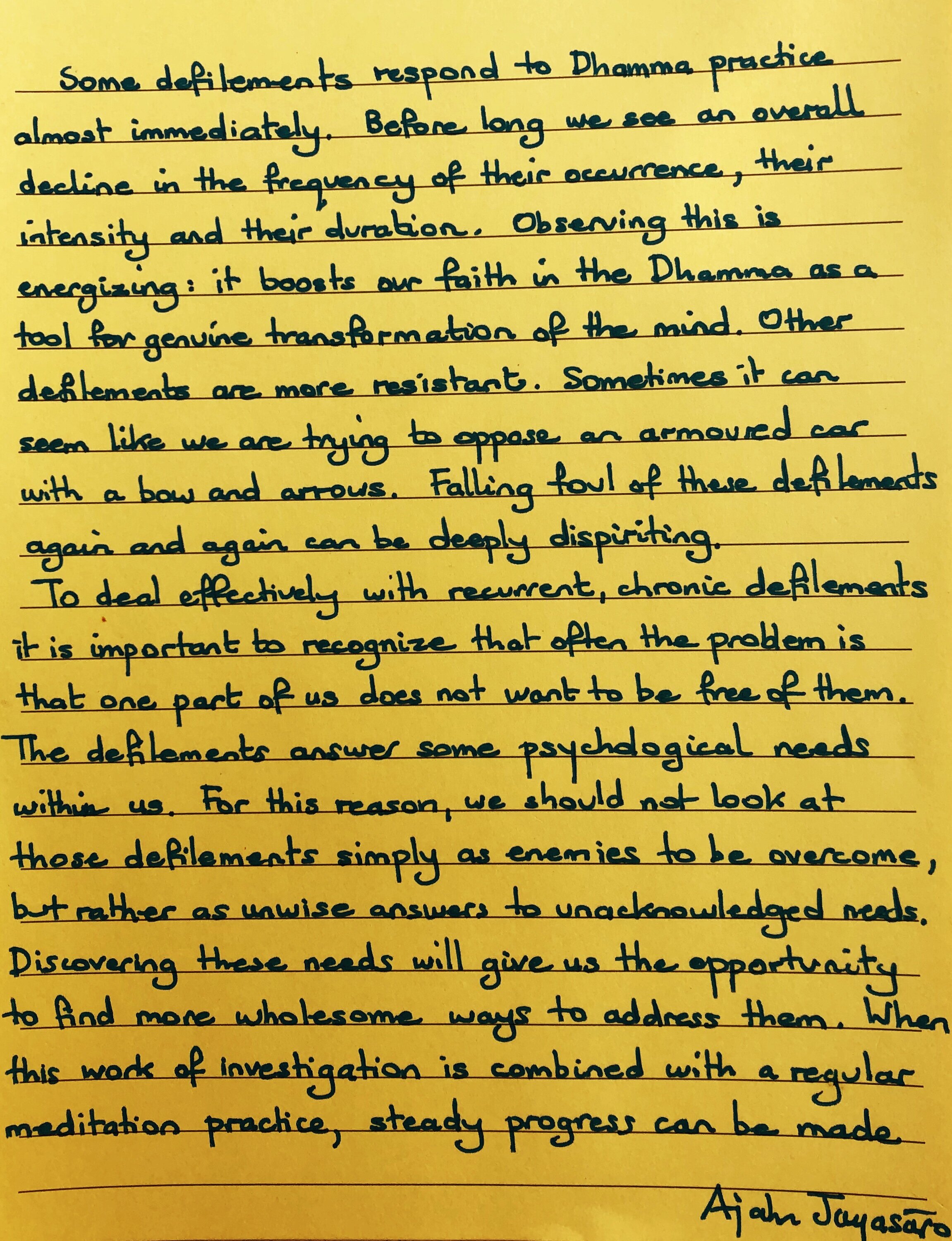
To Deal Effectively with Recurrent, Chronic Defilements
Some defilements respond to Dhamma practice almost immediately. Before long we see an overall decline in the frequency of their occurrence, their intensity and their duration. Observing this is energizing: it boosts our faith in the Dhamma as a tool for genuine transformation of the mind.

The Zen Ox Herding Pictures #1
A young man is in the wilderness surrounded by mountains. He seems to know nothing about life and the world as his face expresses doubt, fear, and loneliness. He is standing awkwardly and searching aimlessly for something.

Stopping the Flow of Dependent Origination
“Buddhism specifies that there is no self at all, no permanent center in anything, nothing that does not change. But isn’t the element of consciousness, which is found in all living things, that unchangeable center? And though it may not be called the self, as ego is self, it is in its purified form that found in Nibbāna, the essential spirit of all living things. So while we do not contain self, while the self is illusion, spirit is not. We contain spirit, spirit is real.”
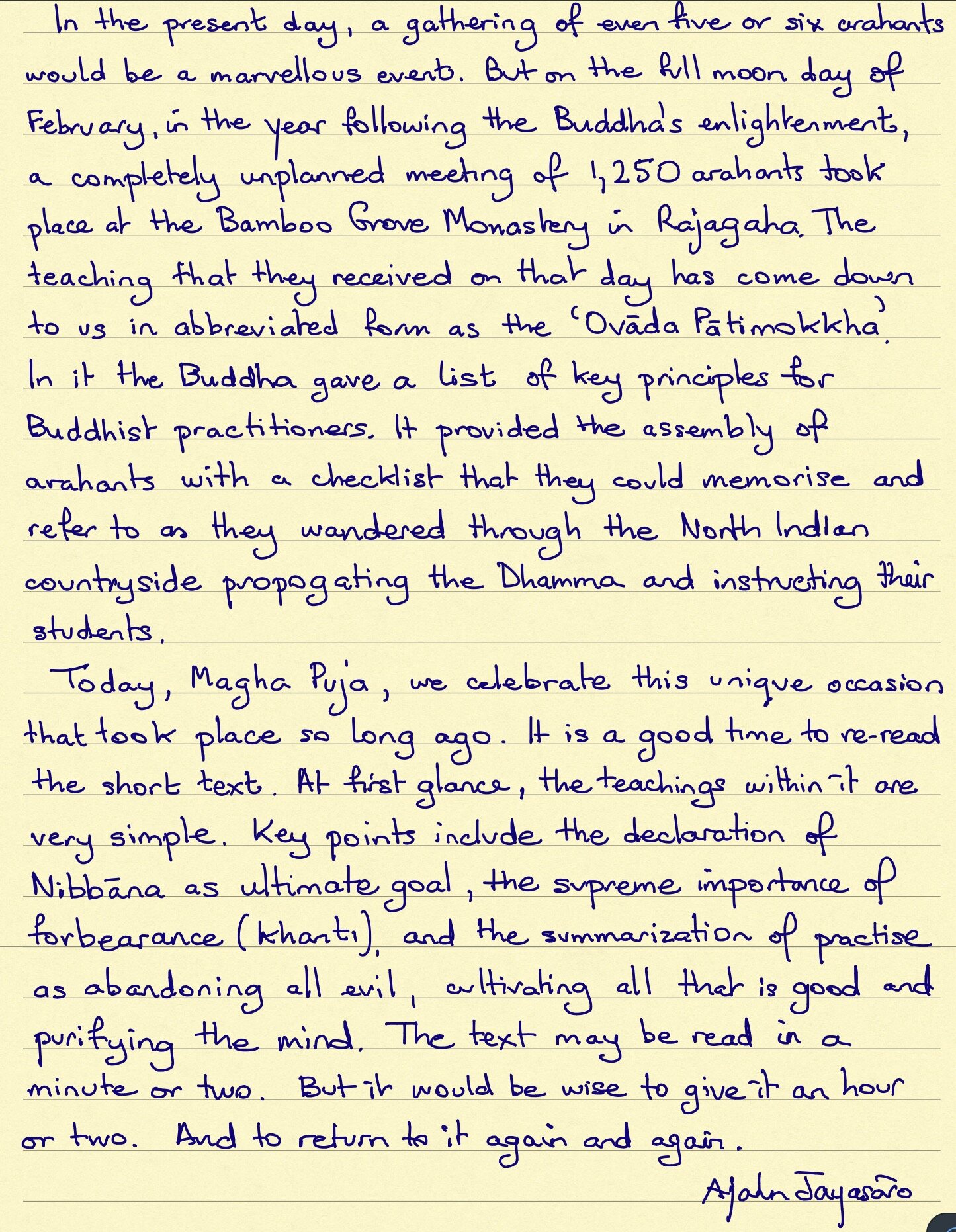
Magha Puja
In the present day, a gathering of even five or six arahants would be a marvellous events. But on the full moon day of February, in the year following the Buddha’s enlightenment, a completely unplanned meeting of 1,250 arahants took place at the Bamboo Grove Monastery in Rajagaha. The teaching that they received on that day has come down to us in abbreviated form as the ‘Ovāda Pātimokkha’.

The Zen Ox Herding Pictures
Catching or taming an ox is a metaphor for the life of a human being. It represents how the life of an ordinary person changes into a supra-mundane or liberated life, as explained in Zen Buddhist teachings.
